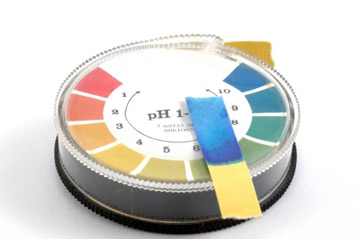Reduce your Acid Intake and Reduce your Weight
If your primary goal is weight loss, then it’s time to start relying more on science and less on fad diets
If there was one diet that worked for us all, then we’d know it by now; we’d all look great and we’d all be happy, but we don’t and we aren’t. The reason that some diets work, at least for a short time, is because they incorporate scientific principles to weight-loss. Some of these principles might include: Creating a healthier PH balance, using the Glycemic Index, avoiding inflammatory foods, creating a caloric deficit, and balancing macronutrient intakes. I’ll eventually teach you how to lose weight using all of these approaches, but let’s not overwhelm ourselves too quickly! Today’s lesson begins with PH balance.
The human body oftentimes becomes acidic through an unbalanced diet, excessive amounts of exercise, or both. Long-term acidity can result in damage to normal cell structure and function, hindered weight-loss efforts, and increasing our risk of developing certain kinds of cancers.
Most diet fads introduce alkaline foods as an approach to weight-loss, whether they admit it or not. Adopting a high alkaline diet simply means that we’re looking to decrease our reliance on meat (especially red meat), wheat, processed foods, refined sugars, alcohol, and caffeine. I use PH strips to check my acidity levels throughout the day. PH paper can be purchased online or at your nearest Whole Foods grocery store. The test simply requires you to place the paper on your tongue for a moment and wait for it to change color. There is a color reference chart that helps you to determine your PH level: 0 is completely acidic and 14 is completely alkaline, so 7 is considered to be neutral. Depending upon my score, I’ll adjust my exercise or my next meal to help bring me closer to neutral or alkaline.
Generally speaking, exercise makes us more acidic, especially higher intensity exercise. Well, isn’t that confusing! We exercise to burn calories, but at the same time risk creating an acidic internal environment. This is all the more reason to be more careful with the foods we eat. Since I exercise a ton and enjoy having meat in my diet, I try even harder to eat high-alkaline foods at every opportunity available.
Food for thought: how to make yourself more alkaline
1) Drink warm water with lemon as often as possible. I suggest adding 1 tsp baking soda to your cocktail first thing outta bed in the AM.
- we tend to be more acidic in the morning because our bodies are dehydrated (water is alkaline)
- baking soda is extremely alkaline
- although lemon is acidic outside of the body (below a 7), it becomes alkaline once it’s in the bloodstream (above a 7)
- warm water allows the lemon and baking soda to be metabolized faster
2) Focus on eating more highly alkaline foods and less highly acidic foods.
- When acidic foods are consumed, they should be combined with alkaline foods. This decreases overall acidity during digestion
3) Use the following lists to learn which foods are best and which foods are worse when it comes down to your weight-loss efforts:
Highly Acidic Foods:
- alcohol, artificial sweeteners, bacon, black tea, butter, candy, cake, cheese, cocoa, coffee, corn, corn meal, crab, eggs, fried foods, game birds, hops, hydrogenated oil, ice cream, jam, jelly, lobster, malt, margarine, milk chocolate, msg, mushrooms, oatmeal/oats, ocean fish, pasta, pastries, pork, processed foods, pudding, raw milk and cow’s milk, refined oils, refined sugar, rice, sausages, shrimp, soft drinks, table salt, turkey, white sugar, veal, vinegars, white bread, and yeast.
Moderately Acidic Foods:
- Barley, beans, carob, cashews, cranberries, fructose, granola, legumes, pistachios, potatoes, soy sauce, tamari, tapioca, vanilla, and wheat
Low Acidic Foods:
- Agave nectar, brown rice syrup, dried fruit, fresh water fish, lentils, olives, raw honey, rye bread, sprouted-grain bread, whole grain bread
Neutral Foods:
- Fresh coconut meat, ghee, xylitol
Low Alkalizing Foods: Fresh only (avoid store-bought juices)
- Amaranth, apples, apricots, black-eyed peas, bananas, black currants, blueberries, Bragg liquid aminos™, brown and basmati rice, cantaloupe, cherries, cold pressed oils, currants, dates, evening primrose oil, fava beans, figs, fish oils, flax seed oil, gooseberries, grapes, grapefruit, kamut, kiwi, lettuce, mandarin oranges, mangoes, miso, nectarines, olive oil, oranges, papayas, peaches, pears, pecans, pineapples, plums, pomegranates, quinoa, raspberries, red currants, spelt, spices, string beans, sunflower oil, strawberries, tangerines, walnuts, watermelon, and wild rice
Moderately Alkalizing Foods:
- Almonds (raw), borage oil, brazil nuts, caraway seeds, chia seeds, cumin seeds, flax seed oil, flax seeds, hazelnuts, herbs, millet, parsnip, poppy seeds, pumpkin seeds, radishes, sesame seeds, soy flour, stevia, sunflower seeds, and tofu
Highly Alkalizing Foods:
- Artichokes, Arugula, Asparagus, Avocado, baking soda, barley grass, beet greens, beets, broccoli, cabbage, carrots, cauliflower, celery, celery root, chard, chicory, chives, cilantro,collards, cucumbers, dandelion greens, eggplant, endive, fennel, garlic, ginger, green beans, jicama, kamut grass, kohlrabi, leeks, lemon, lettuce, lima beans, lime, lotus root, mustard greens, onions, parsley, peas, peppers, pumpkin, radishes, rhubarb, rutabaga, sea salt, sea vegetables, seaweed, sorrel, soy lecithin, soy beans, soy nuts, spinach, sprouted beans-grains-seeds, squash, sweet potatoes, taro root, tomatoes, tomatillos, turnips, wasabi, watercress, wheat grass, and zucchini
Stay fit, stay happy, stay healthy, and stay alkaline!
XOXO
Lauren

